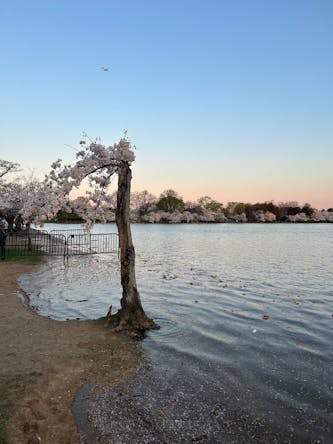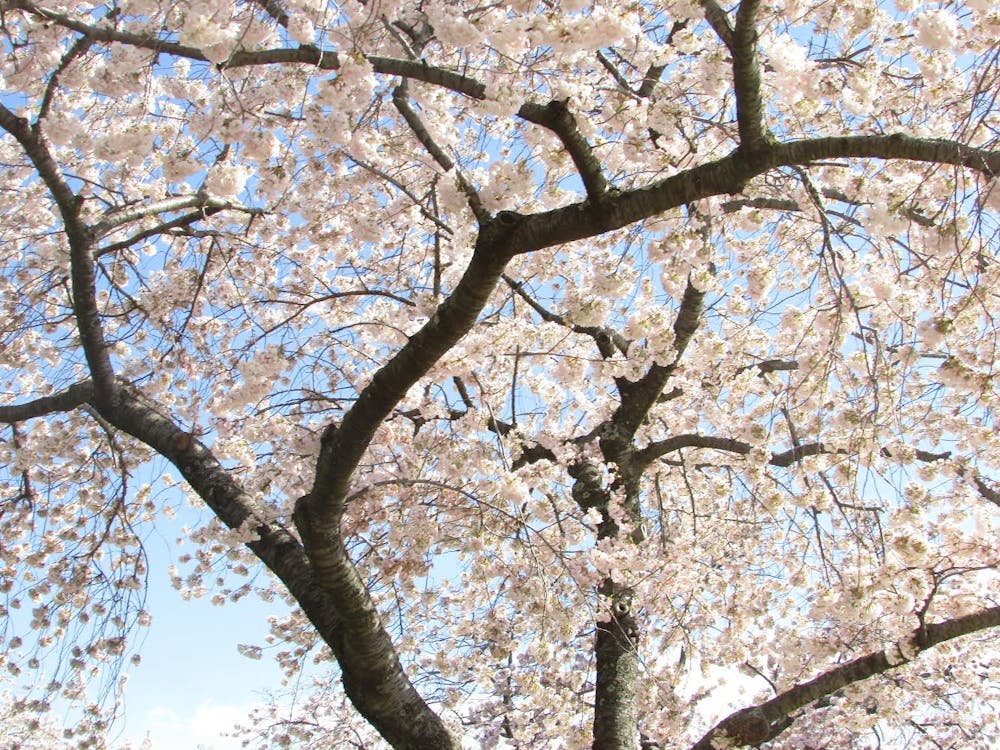Springtime in D.C. means approximately 3,700 Japanese cherry trees bloom bright pink and white. This year, the National Park Service declared peak bloom, when 70 percent of the blossoms are open, on March 17, the second earliest date ever recorded.
The NPS’ prediction for peak bloom was one week off, originally scheduled for March 23. The National Cherry Blossom Festival did not start until March 20, throwing off the timing of events. This has raised questions about the effect of climate change on the trees’ phenology, which is the study of plant life cycle events.
Peak bloom now occurs on average one week earlier than it did when the cherry blossoms were gifted to the U.S. by Japan in 1912, according to a study by the Environmental Protection Agency. Data from Japan’s trees goes back 1200 years and shows that since 1850, the bloom time has moved up by two weeks.
Ilissa Ocko, a senior climate strategist at the Environmental Defense Fund, looks at how types of climate pollutants are emitted from different activities and how they contribute to climate change in the near and long term.
“The cherry blossoms [are] this visual sign. It’s this very apparent signal that something is wrong,” Ocko said. “I have cherry blossoms that I look out from my bedroom window so it’s something that’s always been really meaningful to me, especially as such a visible and tangible way to experience climate change firsthand.”
Ocko said that air temperature is the main driver for the timing of blooms, more than sunlight or rainfall. The more warm days in winter, the earlier the cherry blossoms will bloom.
Stephen MacAvoy, an associate professor of Environmental Science at American University, said that no single event can be definitively linked to climate change. Rather, it’s all about looking at long-term averages over time.
“Climate always changes. What’s happening now is humans are speeding it up, just like we do with everything else,” MacAvoy said. “We tend to speed up cycles of nature and we’re speeding up the way the earth is responding to the extra trapped heat, so we’re accelerating things.”
MacAvoy said that the earlier blooming of the cherry blossoms affects other aspects of nature as well.
“We don’t usually appreciate how the timing in nature is important for its functioning. When you begin to mess with timing, it’s not about when the blossoms come anymore.” MacAvoy said. “It’s about feeding baby birds, or fish migration or insect populations.”
Ocko said changing climate can also affect other agriculture. She said that there are a lot of different weather conditions that play a role in determining crop productivity. By shifting the growing season earlier, it becomes more likely that initial growth will occur before the last freeze of winter. Late freeze can kill crops which can prove devastating for farmers' livelihoods, the economy and food security.
Climate change has also prompted NPS to announce a three-year, $113 million rehabilitation project of the seawalls around the Tidal Basin and along the Potomac River set to begin in May. NPS will chop down 158 of the cherry trees on the National Mall. When the project is completed, it will have replanted 455 trees, including 247 cherry trees.
“This critical investment will ensure the park is able to protect some of the nation’s most iconic memorials and the Japanese flowering cherry trees from the immediate threats of failing infrastructure and rising sea levels for the next 100 years,” NPS said in a press release on March 13.

Much to the dismay of D.C. residents, the well-known tree “Stumpy” is among the trees being chopped down.
“It’s this other reminder of these difficult choices that we have to make because of what we’re doing to the planet,” Ocko said. She added that the earlier bloom and the new seawall project are “microcosms” of climate change.
“I am worried, but I am not despairing,” MacAvoy said. “There are some hopeful signs that nature, at least parts of it, are adapting and I think as we gather more data, we’re going to find more evidence of nature adapting instead of collapsing.”
This article was edited by Walker Whalen, Abigail Turner and Abigail Pritchard. Copy editing done by Luna Jinks, Isabelle Kravis and Ariana Kavoossi.





